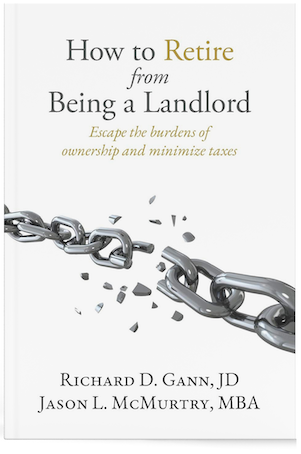
Which Real Estate Investments Hedge Inflation Risk?
Which Real Estate Investments Hedge Inflation Risk?
In a recent post, we discussed inflation’s impact on commercial real estate both from a broad and narrow viewpoint. It is a commonly held belief that private commercial real estate can be a worthwhile investment during times of inflation. This is because private real estate’s value is primarily a function of real estate appreciation and property management performance—both of which can be positive during periods of inflation. Private real estate also avoids the volatility of publicly traded markets.
Yet making blanket statements such as “commercial real estate does well in times of inflation,” provides little value, particularly when inflation continues to hover near 9 percent, the highest in 40 years. Serious investors need an array of assessment measures to help determine how potential returns compare to risks.
A commonly used assessment of risk-adjusted return is the Sharpe ratio, which measures the performance of an investment or category compared to a risk-free asset (such calculated risk-adjusted returns are commonly compared against the U.S. Treasury, which is accepted as the standard “risk-free” investment.[1]) However, this return-to-risk ratio is punished for all types of volatility – good and bad. As some investors favor upside volatility, an alternative risk assessment tool is the Sortino ratio. The Sortino ratio is a risk-adjusted return measure that is punished only for downside deviation, or bad swings in the market.
As measured by the Sortino ratio, a recent analysis by Berkadia showed that U.S private commercial real estate has the highest average risk-adjusted performance of the three asset classes considered:[2]
Asset Class Sortino Ratio
U.S. stock market 0.20
Traded REITs 0.54
U.S. private investment real estate 1.88
The Berkadia report explains that, using the Sortino Ratio, inflation tends to spur risk-adjusted performance in U.S. private investment real estate (67% correlation). Traded REITs share a similar but dampened relationship (53%), while stocks share this quality but to a lesser extent (13%).
Breaking down commercial real estate investments into property types, including apartments, hotels, industrial buildings, private office buildings and retail buildings, the report shows that apartments and industrial buildings and have the strongest risk-adjusted performance during both times of moderate and high inflation.[3]
Investors are always encouraged to consider a range of assessment methods and discuss their own personal situations with their financial professionals ahead of making investment decisions. For current owners who are ready to retire from being a landlord, there are passive real estate investments that may allow investors an ability to move from an active to a passive role of real estate ownership on a tax-deferred basis.
For more information about tax-advantaged securitized real estate investments, please call 1031 Capital Solutions at 1-800-445-5908 or visit our website, 1031capitalsolutions.com.
_____________________
This is for informational purposes only, does not constitute as investment advice, and is not legal or tax advice. Because investors situations and objectives vary this information is not intended to indicate suitability for any particular investor. Please consult the appropriate professional regarding your individual circumstance.
This material is not to be interpreted as tax or legal advice. IRC Section 1031, IRC Section 1033 and IRC Section 721 are complex tax concepts, therefore you should consult your legal or tax professional regarding the specifics of your particular situation.
Investments in securities involve a high degree of risk and should only be considered by investors who can withstand the loss of their investment. Prospective investors should carefully review the “Risk Factors” section of any prospectus, private placement memorandum or offering circular.
The data contained in this material was obtained from third-party sources believed to be reliable; however, 1031 Capital Solutions, CIS, and CAM do not guarantee the accuracy of the information.
A REIT is a security that sells like a stock on the major exchanges and invests in real estate directly, either through properties or mortgages. REITs receive special tax considerations and typically offer investors high yields, as well as a highly liquid method of investing in real estate. There are risks associated with these types of investments and include but are not limited to the following: Typically, no secondary market exists for the security listed above. Potential difficulty discerning between routine interest payments and principal repayment. Redemption price of a REIT may be worth more or less than the original price paid. Value of the shares in the trust will fluctuate with the portfolio of underlying real estate. Involves risks such as refinancing in the real estate industry, interest rates, availability of mortgage funds, operating expenses, cost of insurance, lease terminations, potential economic and regulatory changes. This is neither an offer to sell nor a solicitation or an offer to buy the securities described herein. The offering is made only by the Prospectus.
Securities offered through Concorde Investment Services, LLC (CIS), member FINRA/SIPC. Advisory services offered through Concorde Asset Management, LLC (CAM), an SEC-registered investment adviser. Insurance offered through Concorde Insurance Agency, Inc. (CIA) 1031 Capital Solutions is independent of CIS, CAM and CAI.
[1] Investopedia, Risk-Adjusted Return, November 30, 2021
[2] Berkadia, A Better Way to Assess Inflation and Risk in Real Estate, 2021. Time period was 4Q 1984 – 2Q 2021.
[3] Because the Sortino ratio only considers downside volatility rather than all volatility (as the Sharpe Ratio does), the ratio calculation is only meaningful if there is significant downside. The Sortino Ratio has been accused of not showing the full picture. What is the Sortino Ratio? CFI Training, February 5, 2022
continue reading
Related Posts
When the Federal Reserve (the Fed) adjusts its target interest […]
1031 Industry Veterans Launch Proprietary Software for Rental Housing Providers […]
When it comes to building and preserving generational wealth through […]











